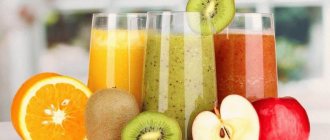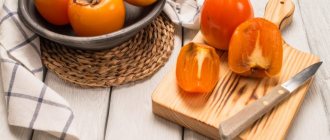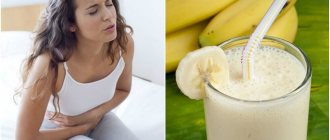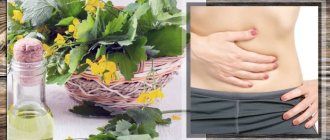Currently, gastritis and ulcers are one of the most common ailments. Almost 80% of the world's population have these diseases in various forms. Therefore, everyone tries to adhere to a special diet that does not harm the body. Today we’ll talk about whether it’s possible to eat cabbage if you have gastritis, and what method of preparing it is the healthiest.
For gastritis and ulcers, a person is allowed only those ingredients that will not damage the gastric mucosa. Therefore, the menu for the patient is compiled based on this principle. It is important to remember that, for example, with gastritis with high acidity, a different diet will be prescribed. For this reason, a product may be suitable for one person, but harmful to another.
Cabbage has been known to us since ancient times. Since it has a number of unique properties, many people make it a frequent guest on their plate. But is it possible to eat cabbage if you have a stomach ulcer?
Are vegetables allowed for ulcers?
Plant foods are important for the body to function properly. Garden crops are rich in beneficial microelements, valuable minerals and vitamins. In addition, such products contain pectins, which protect the gastric mucosa from negative effects and have the following effect:
- beneficial substances that get inside bind toxins and remove them from the intestines;
- microflora is normalized;
- the processes of fermentation and decay are inhibited;
- intestinal motility improves;
- the cleansing process is accelerated.
Important: If you stop eating vegetables, the patient will experience increased gas formation and flatulence. Therefore, vegetables for stomach ulcers must be included in the menu.
However, it should be noted that not all vegetables are beneficial for ulcers. Some cause irritation of the mucous membrane and increase the secretion of gastric secretions. In addition, such products should be completely excluded from the diet in fresh form in case of exacerbation of ulcer pathology.
Is it possible to eat sauerkraut if you have a stomach ulcer?
Sauerkraut is beneficial due to its large amount of vitamin U, which is a great preventative against the formation of ulcers. The lack of this vitamin contributes to the thinning of the walls of the mucous membrane of the stomach and an increased risk of the formation of lesions.
The use of sauerkraut is allowed only in a healthy state, when there are no erosions or adhesions on the walls of the stomach. Then the pickled vegetable will not only help restore the body’s properties, but also improve the motility of the stomach and intestines.
In the stage of subsiding of the pathology, sauerkraut juice is also useful, which, due to its properties, is more easily absorbed by the body, carries the rapid absorption of the vitamin into the bloodstream and enhances the effect of the patient’s immune system, eliminating bacteria and pathological agents.
The preventive properties of sauerkraut are irreplaceable in the body, so in a healthy state this vegetable must be eaten regularly.
What vegetables are allowed during an exacerbation period?
What vegetables can you eat if you have an ulcer during an exacerbation? The ulcer menu for the disease in question includes food that does not cause intestinal irritation. In addition, it is important that foods do not provoke an increase in hydrochloric acid. These include:
- potato;
- zucchini;
- carrot;
- pumpkin;
- some varieties of cabbage, except white cabbage;
- greenery.
This plant food has healing properties: it heals wounds, enriches the body with useful microelements, improves immunity and speeds up the healing process. However, so that vegetables do not provoke an aggravation, they are subject to heat treatment.
Potato
Potatoes are recommended for stomach and duodenal ulcers, not only when they fade, but also when they are severe. This root vegetable contains many beneficial vitamins. In addition, potato tubers are rich in carotene, organic acids and microelements. But in order to benefit from this culture, it is important to know how to prepare it correctly:
- in case of exacerbation of the disease, it is strictly forbidden to fry and consume root vegetables;
- potatoes may be baked in their own skins;
- You can also prepare puree in water or eat it boiled.
Potatoes do not cause an increase in acidity, block inflammation and eliminate cramps. In addition, the root vegetable contains fiber that does not provoke intestinal irritation and does not have a stimulating effect on peristalsis. But it should be noted that when the defect worsens, potatoes are consumed only warm.
Broccoli
Broccoli is also useful for duodenal ulcers. It is rich in folic acid, contains many useful trace elements and salt. Moreover, this culture contains a number of valuable vitamins that have an antiulcer effect and inhibit the activity of the main causative agent of pathology, Helicobacter.
In addition to broccoli, other varieties of cabbage are also indicated for ulcerative defects affecting the gastrointestinal tract:
- colored;
- Beijing;
- sea and pickled in small quantities.
As for white cabbage, it is not advisable to add it to your diet. Since this garden crop promotes the active production of acidity and gas formation. This food of plant origin is allowed only when the pathology subsides, in a small volume.
But cauliflower will only bring benefits. Healthy purees and soups are not prepared from it. At the same time, it is better to cook dishes from the inflorescence. Since the leaves negatively affect the mucous membrane, damaging it.
As for stewed or salted cabbage, such dishes are prohibited. Excessive consumption of sauerkraut and seaweed will also do more harm than good. Therefore, during an exacerbation, it is recommended to introduce such dishes into the diet in moderation.
Carrot
Carrots will also be useful for stomach ulcers in the acute stage. It contains vitamins and useful minerals. It should be noted that only boiled and ground fruits are allowed for consumption. Since the culture in its raw form promotes the production of gastric secretions.
In case of ulcerative exacerbation of the intestines, the root vegetable is added to the diet in small quantities. And when remission occurs, gastroenterologists recommend regularly drinking freshly squeezed juice as a preventative measure.
Pumpkin
If you have an aggravated stomach ulcer, you can add pumpkin to the menu. This garden crop is considered a real storehouse of the following substances:
- vitamins B, C and A;
- measure and copper. By the way, these elements are difficult to find in other vegetables;
- cellulose;
- potassium and carotene.
In case of ulcerative exacerbation, it is allowed to eat baked, boiled or stewed pumpkin. At the stage of exacerbation, pumpkin juice mixed with acacia honey is useful.
Important: For ulcerative exacerbations, gastroenterologists allow you to drink pumpkin juice 40 minutes before meals. This allows you to eliminate pain and alleviate the course of the pathology.
The main advantage of pumpkin: the ability to inhibit the production of gastric secretions, normalize digestion and eliminate inflammation of the mucous membrane. Also, the product does not affect peristalsis.
Zucchini
There is a list of vegetables that are indispensable for ulcerative pathology. One of these is zucchini. This dietary garden crop is rich in the following components:
- vitamins B, C and E;
- potassium;
- iron.
In addition, this fruit contains components that block the development of malignant tumors, eliminate inflammation and normalize gastrointestinal motility. But it is necessary to highlight that in case of an ulcer, zucchini can only be consumed boiled, stewed or baked. Because raw fruits help increase the production of hydrochloric acid.
Greenery
Greens are very beneficial for the human body. For ulcer sufferers, the use of these plants is mandatory. The permitted ones include the following:
- Salad. The culture is rich in carbohydrates, vitamins and fats. In addition, this plant-based crop contains phosphorus, calcium, iron and potassium. Due to this composition, the salad is recommended fresh for ulcers. The juice of this plant is also useful;
- Celery. An indispensable culture for the disease in question. Celery contains vitamins, oxalic acid, purines and essential oils. These elements activate the healing of erosions and create a film that protects the mucous membrane from the effects of hydrochloric acid;
- Dill. It is recommended to introduce the plant into the menu in case of exacerbations in small quantities. Dill contains phosphorus salts, magnesium, calcium, potassium and vitamin C. Regular use of the culture during the attenuation of pathology helps prevent exacerbations and accelerates the healing of wound areas;
- Parsley. When an ulcer worsens, parsley is also recommended to be added to the menu. This plant contains carotene, beneficial microelements and vitamins. The culture promotes mucosal healing. Therefore, it is recommended to consume it on an empty stomach 30-40 minutes before meals.
Depending on the course of the defect in question, the patient’s menu is expanded with other equally useful crops. However, it is better to discuss this issue with your gastroenterologist.
Sea kale
Experts in the field of gastroenterology argue that when treating stomach ulcers, greater effectiveness in therapy can be achieved by using zinc in large quantities. The sea vegetable variety does have a sufficient amount of zinc. But, despite such a significant advantage, adding this variety of vegetable to the menu during an exacerbation of the disease is not recommended for the following reasons:
- the vegetable can increase acidity;
- puts a lot of stress on the already damaged walls of the organ.
Return to contents
What vegetables are allowed during remission?
During the period of attenuation of the disease, the list of permitted vegetables can be expanded. Doctors often allow the following crops to be eaten:
- beet;
- cucumbers and tomatoes;
- onion;
- bell pepper
These fruits help increase the production of gastric juice. Therefore, they need to be treated with caution and gradually introduced into the diet. However, plant foods cannot be completely eliminated. Since each culture is rich in microelements and other beneficial substances for the body.
Beet
Beetroot for stomach ulcers is indicated in the attenuation stage of the pathology. During severe cases, this product is avoided. Because in addition to useful elements, beets contain a large amount of natural acids.
Beetroot is prescribed for duodenal ulcers as a preventive measure. The most suitable for consumption is beet juice with acacia honey. Take the drug in courses.
Another question that interests many people suffering from gastrointestinal problems is whether it is possible to eat raw beets for stomach ulcers. The most suitable for consumption would be boiled beets or juice squeezed from them. However, if you want to eat the crop raw, its consumption is indicated in small quantities.
Cucumbers and tomatoes
Is it possible to eat fresh cucumbers and tomatoes if you have a stomach ulcer? These vegetables are strictly contraindicated during an exacerbation. It is permissible to eat cucumbers for stomach ulcers only during remission, observing the following rules:
- fruits are eaten only fresh;
- eat cucumbers in small quantities, after removing the peel;
- It is better to add the culture to other dishes.
As for the question of whether tomatoes are allowed for stomach ulcers, everything is not so simple. Tomatoes activate the production of gastric secretions, have a negative effect on the intestines, block the healing of wound areas and provoke inflammation. In addition, this fruit negatively affects the functioning of the pancreas.
In general, gastroenterologists allow the consumption of tomatoes only during remission, in small quantities. with pre-peeled skin.
Onion
In the fight against the disease in question, onions are also allowed, but only for the attenuation period. They eat it boiled, combining it with other dishes. Onions are rich in flavonoids and have a good antimicrobial effect. In view of this, it will be indispensable as a preventive measure.
bell pepper
Bell peppers should be completely excluded during an exacerbation period. Because this vegetable helps increase the secretion of gastric secretions. But at the moment of attenuation of the pathology, the fetus is allowed due to a number of beneficial properties:
- pepper contains substances that block the development of malignant tumors;
- the fruit is considered one of the powerful antioxidants of natural origin;
- The culture is endowed with good antibacterial properties, due to which it is able to inhibit the atypical activity of Helicobacter.
Important: When the ulcer subsides, it is allowed to add a little garlic to dishes as a seasoning. It is prohibited to consume this crop without preliminary heat treatment.
By adhering to the diet developed by a gastroenterologist, it will be possible to speed up the healing process of erosions that have affected the mucous membrane. At the same time, it is important to remember that you need to eat foods of plant origin in small quantities in order to prevent exacerbation in the future.
Allowed and prohibited foods for diet No. 1
A patient with a stomach and/or duodenal ulcer should remember this table: permitted foods will promote rapid regeneration of the mucous membrane, one might say, help the main therapy, while prohibited foods will nullify treatment with the most effective and expensive medications. The list of allowed foods during the diet is quite wide.
Rich meat and fish broths (first boiling) and first courses, sauces, gravies based on them.
During an exacerbation, soups with meat and fish broth are prohibited.
Lean meat with a minimum of veins: rabbit, turkey, beef, chicken, veal. Dishes: meatballs, zrazy, cutlets, soufflé, steamed meatballs.
When processing meat, you need to cut out cartilage, veins, and remove the skin from the bird.
Fatty varieties of fish, meat, as well as lard, caviar, salted fish.
Mushrooms in any form.
Smoked meats, any sausages, pates. Canned foods.
At the stage of stable remission, you can sometimes eat boiled sausage or mild ham.
Low-fat dairy products: sour cream, yogurt (preferably homemade), milk, cottage cheese, fermented baked milk.
Outside of an exacerbation, fresh warm kefir is allowed, but not sour, optimally with the addition of a spoonful of vegetable oil.
Unleavened low-fat cheeses in crushed form.
Occasionally you can add cream to dishes.
Easily digestible vegetables: cauliflower, broccoli, young carrots, potatoes, zucchini, pumpkin.
Occasionally, green peas and boiled beets can be introduced into the diet (as an additive to a dish).
Sweet tomato varieties are limited.
Cucumbers without aggravation, not a lot, without skin, chopped. Sour tomatoes are not allowed, sweet varieties are allowed without exacerbation by pouring boiling water over them and removing the skin (no more than 100 grams per day).
Dill and parsley (without stems) - in small quantities without exacerbation.
Non-acidic berries, fruits, baked apples and pears, bananas.
Allowed fruits and vegetables should be eaten without peeling and in grated form.
Strong coffee, cocoa, teas.
Weak cocoa can be made with milk from time to time. Coffee lovers during a period of stable remission are periodically allowed weak coffee with milk, but not on an empty stomach.
| Authorized Products | Prohibited Products |
| Low-fat meat soups with secondary broth. Meat for broth: chicken, beef, other dietary varieties. Milk soups with permitted cereals or pasta. Viscous cereal soups. Soups with vegetable broth. Puree soups. | |
| Low-fat fish, minced fish dishes: steamed, oven-baked, baked in foil. | Occasionally you can eat soaked low-fat herring. |
| Olive oil, unrefined sunflower oil, unsalted butter in small quantities. | |
| Dairy products with high acidity: kefir, ayran, tan. | |
| Fatty dairy products: buttermilk, whole, condensed milk, cream, cheeses. | |
| Soft-boiled eggs, steam omelette. You can have raw eggs, but only of proven quality (there is a high risk of salmonella infection). | Hard-boiled eggs, scrambled eggs. |
| Boiled pasta, cereals: rice, rolled oats, buckwheat, semolina. | Barley, corn, wild rice, muesli, granulated bran, millet, pearl barley, barley, corn grits, legumes. |
| Vegetables with a lot of hard-to-digest fiber: radishes, radishes, white cabbage, peas, turnips, rutabaga, beets (during an exacerbation period) | |
| Vegetables and herbs that irritate the gastric mucosa: sorrel, rhubarb, onions, garlic, sour tomatoes. | |
| Berries, fruits with acid: figs, gooseberries, currants, grapes, lemons, limes, tangerines, oranges, pineapples, watermelons. | |
| Nuts, seeds, dried fruits, apricots. | |
| White milk sauce. | Hot, salty, spicy sauces: horseradish, mustard, ketchup, vinegar. |
| Desserts: marmalade, honey, marshmallows, marshmallows, jam, preserves, jelly, jelly, mousses, creams. | Chocolate, ice cream. |
| Decoctions of wheat bran, rose hips, non-acidic freshly pressed juices diluted with water 1:1, light teas, compotes. | |
| Bread made from wheat flour is stale (a day or more after baking). | Rye bread. |
| Baking from unleavened dough without yeast in small quantities. Acceptable filling: apples, fish, lean meat, cottage cheese. Rusks, unsweetened cookies. | Baking. |
In what form is it best to consume?
Introducing permitted fruits into the diet is required in compliance with certain measures:
- In case of acute ulcerative pathology, only potatoes are allowed in their raw form. As for other permitted garden crops, they are eaten only after heat treatment. Can be boiled, stewed, baked or steamed;
- If the defect is chronic, it is permissible to eat root vegetables raw. However, the peel should be removed before consumption. In addition, such food is cut into small slices and eaten in small portions;
- In case of ulcerative defect, canned vegetables, salads with mayonnaise and vinegar are strictly prohibited;
- It is recommended to eat meals often and not in large quantities. At the same time, it is advisable to limit yourself to a glass of kefir or an apple at night. Because at this time of day the work of the stomach slows down. As a result, food is not processed;
- Even during the period of attenuation of the disease, spices cannot be included in the menu. Such products provoke an exacerbation, accompanied by pain, nausea and vomiting.
Important: Ulcer sufferers should definitely purchase a double boiler. This device allows you to prepare delicious dishes without adding oil and losing all the beneficial properties.
Vegetables are important and healthy. But you should eat them little by little in order to avoid dangerous health consequences. In addition, if side effects occur, it is necessary to exclude the culture that provoked this condition from the diet and immediately consult a gastroenterologist for advice.
Broccoli for gastritis with high acidity
If you have high acidity, broccoli should be eaten in very moderate quantities. It is steamed, with a minimum amount of oil and with the addition of other vegetables that reduce the level of the enzyme involved in the digestion process. The daily intake of broccoli in this case should not exceed 30-40 grams. It is not recommended to eat it before bed due to the presence of a number of components that provoke the formation of gases in the intestines.
Broccoli and cauliflower soup for high acidity
For high acidity, broccoli and cauliflower soup is beneficial. A weak broth is made from 300 grams of veal. Then the meat is taken out, and the prepared 100 grams of bulgur are placed in the pan.
After 10 minutes, a small carrot, an onion and 300 grams of broccoli and cauliflower are sent there. The soup is simmered over low heat for 15 minutes. At the very end, add the veal, disassembled into fibers, and after turning off, season the soup with a spoon of vegetable oil.
Italian-style cutlets with high acidity
Boil 200 grams of broccoli, mix with 1 egg and grind in a blender. Then add 600 grams of minced meat, chopped onion, salt, pepper and a tablespoon of low-fat sour cream to the mixture. Cutlets are formed from the mass and steamed.
Another option for preparing cutlets with the addition of broccoli: mix all the ingredients except cabbage, and put a whole boiled inflorescence inside each cutlet.
What vegetables are prohibited?
Many crops are allowed to be consumed in small quantities. But there are products that are strictly prohibited, these include:
- radishes and turnips;
- sorrel and spinach;
- rhubarb and horseradish;
- legumes
These fruits contain a large amount of essential oils that injure the mucous membrane, regardless of whether the disease is in the attenuation stage or has worsened. In addition, the crops listed above increase acidity and can cause bleeding.
Is it possible for a peptic ulcer...
Drink soda?
Many patients take soda to relieve heartburn and discomfort. Soda can neutralize the effect of hydrochloric acid, which is produced in large quantities during peptic ulcers. But a vicious circle arises: as soon as the soda leaves the stomach and goes into the duodenum, the body produces a new portion of acid in even larger quantities. In addition, when soda and hydrochloric acid interact, carbon dioxide is produced, which swells the walls of the stomach, and this is a danger of perforation. Therefore, soda is prohibited.
Smoking?
Smoking is prohibited if you have an ulcer, since tobacco smoke has an irritating effect on the gastrointestinal tract and provokes an increase in the symptoms of the disease - pain, belching, heartburn. Nicotine enters the stomach and with saliva, slows down the scarring of the ulcer, inhibits regeneration, and also irritates the mucous membrane and intestines in the same way as food, i.e. activates the production of pepsin and hydrochloric acid. If the stomach is empty, the mucous membrane will suffer from the aggressive action of gastric juice. If you smoke on a full stomach, the activity of the digestive glands and motor function will also increase, which leads to the release of gastric contents into the esophagus, especially in people with cardia deficiency. A sad statistical fact is that smokers suffer from this disease 5 times more often than non-smokers.
Smoking an electronic cigarette?
The E-cigarette, which is positioned as safe, is also prohibited. Patients who do not adhere to this advice will agree that “safe smoking” results in heartburn, belching, dryness and a sour taste in the mouth. The vapor that occurs when smoking is by no means so safe and contains many harmful substances (and, according to studies by Japanese and American scientists, carcinogens). Harmful chemicals settle in saliva and enter the stomach when swallowed.
Drink alcohol?
Some people claim that vodka, cognac and other strong drinks speed up the healing of stomach ulcers and reduce pain. However, doctors are categorical on this issue - alcohol is prohibited. Any alcohol, be it 20-year-old whiskey or cheap brandy, increases inflammation in the gastrointestinal tract, increases the acidity of gastric juice, and slows down motor function. Alcohol often causes exacerbation of the disease and provokes gastric bleeding.
A healthy dairy product with a lot of protein and calcium can be introduced into the diet during the remission stage. Unleavened cheeses with a fat content of about 15% are allowed: ricotta, feta, Arla Oltermani, Viola Polar. But fatty varieties of cheese are prohibited.
Kefir
The fermented milk product is rich in amino acids, vitamins (water- and fat-soluble), enzymes, macroelements and minerals, therefore it has high value for the body and is quickly absorbed by the digestive system (3 times faster than milk). In the stage of stable remission, you can drink kefir: fresh, not sour (for example, for children), slightly warmed, no more than 1 glass per day. In the acute period, kefir is prohibited.
Milk
Without exaggeration, milk can be called the number one product for peptic ulcers. Milk coats the gastric mucosa, relieves pain and discomfort, and also eliminates heartburn. Pasteurized low-fat cow's milk is allowed. Nutritionists also advise patients to drink goat’s milk without heat treatment, but first dilute it by half with boiled water.
Butter
You can add oil to dishes, the main requirement is natural and fresh. With butter, the recommendation about low-fat dairy products is not relevant: you just need to buy high-quality butter with high fat content (82.5%), but use it as an additive to porridge in limited quantities. But inexpensive, low-fat oils most often contain a milk fat substitute.
Sea buckthorn oil
This useful product can be purchased at the pharmacy. Sea buckthorn has a pronounced anti-inflammatory and regenerating effect, accelerates the healing of ulcerative defects and gently envelops the mucous membrane. You can take 1-2 tbsp. sea buckthorn oil per day, before meals.
Chicken eggs are included in the list of foods that you can eat: the protein is rich in low-calorie fats, proteins, amino acids and is quickly absorbed by the body. The yolk is rich in vitamins (D, E, A, B) and minerals and emulsifying fats. During the period of remission, you can use 2 pcs. eggs a day (D-0) soft-boiled or as a steam omelet. Raw eggs on an empty stomach are also useful - they create a protective film on the gastric mucosa, but doctors do not recommend this option of consumption, since the risk of salmonellosis infection is high. No less useful are quail eggs, which suppress pain, relieve inflammation, are completely absorbed by the body, and have an antibacterial effect. Recommendations for consumption are the same, 4-5 quail eggs per day.
During the period of remission, you can drink weak black, green tea with milk, herbal tea (if there is no allergy), you can use herbal teas from the pharmacy, which are called stomach teas. Strong black tea is rich in theophylline, which activates the production of hydrochloric acid, i.e. increases acidity and you can’t drink it when it’s strongly brewed.
People who cannot imagine their life without an invigorating aromatic cup will have to give up coffee (natural and instant) if they are diagnosed with a stomach ulcer. A hot drink irritates the gastric mucosa and increases existing inflammation. Coffee is saturated with chemicals that cause an increase in hydrochloric acid levels. Immediately after drinking coffee, heartburn occurs, a nagging pain in the stomach. In the stage of stable remission, when the ulcer has already healed, you can drink natural coffee with milk once every 7-14 days, but not on an empty stomach. An alternative option is chicory, but, again, only with the permission of a gastroenterologist.
Nuts and seeds
Rich in vitamins, minerals, unsaturated fatty acids, seeds and nuts are prohibited at any time during the course of the disease: they irritate the stomach wall, cause heartburn and take a long time to digest. In addition, hard pieces injure the mucous membrane.
Bananas
The fruit is included in the list of permitted and even recommended products. Banana pulp envelops the gastric mucosa, improves digestion, reduces acidity, and has high nutritional value. Some researchers claim that bananas contain a substance that has a detrimental effect on Helicobacter pylori. Bananas must be ripe, preferably chopped.
Cabbage
White cabbage, including early cabbage, is contraindicated because it contains indigestible fiber, increases gas formation, irritates the mucous membrane, and slows down healing. But cabbage juice during remission is possible and even necessary!
Beetroot
The vegetable is rich in hard-to-digest fiber and contains a number of natural acids that increase the pH of gastric juice. You can’t eat beets during the acute period, but during the period of remission you can, not a lot. There is evidence of the benefits of beetroot juice, which can be carefully included in the diet, diluted with water 1:1 and in a small amount, after letting it sit for 3 hours.
Pepper
Both hot and bell peppers are prohibited. Everything is clear about hot peppers, but sweet peppers contain a substance with an irritating effect - the alkaloid capsiacin. Pepper also provokes the production of hydrochloric acid.
cucumbers
Most experts unanimously prohibit cucumbers in any form both during the period of exacerbation and during the period of remission, since they increase acidity. But in the absence of increased acidity during the period of remission, you can eat young fresh cucumbers without skin in crushed form, for example, grated on a coarse grater, no more than 200 g. per day.
Onions, garlic, ginger, wild garlic, other spicy vegetables and herbs
All this is strictly prohibited, since it has an irritating effect and can provoke an exacerbation, enhances the activity of the digestive glands, activates the production of hydrochloric acid and increases appetite. Some doctors allow patients to add spicy vegetables to their diet after steaming or boiling, but everything is purely individual.
Pancakes, dumplings, dumplings, pasta
Unfortunately, traditional Russian pancakes are not available. The dough for making pancakes alone consists of several components, and they are fried in oil, which means the dish is prohibited. If you bake pancakes in a dry frying pan, the dish will not become dietary. Dumplings are a mixture of fatty meat and dough, difficult to digest and heavy, i.e. they cannot be accepted without reservations. Dumplings are also not advisable, with the exception of unleavened dough with a light cottage cheese or apple filling. As for pasta, finely chopped boiled vermicelli is allowed.
Sweet
Candies, chocolate, caramel, sweet dragees, confectionery baked goods, baked goods, oriental sweets are in the prohibited category. All of these are just harmful carbohydrates that make digestion difficult, increase the production of hydrochloric acid and digestive juice, and irritate the gastrointestinal tract. In the future, they provoke vomiting, heartburn, and pain.
Sugar
You should limit sugar in your diet as much as possible. It is an easily digestible carbohydrate that reduces the absorption of B vitamins.
Dried fruits
Everyone's favorite dried apricots, raisins, prunes, dates are rich in organic acids, which provoke an exacerbation of the disease and are prohibited in their whole form. During a period of stable remission, you can sometimes add soaked, or better yet, boiled prunes and dried apricots to porridge (2-3 pieces per serving).
Fruits and berries
During the period of remission, you can eat non-acidic ripe fruits and berries, grated and without skin: raspberries, strawberries, apples, pears, bananas, and, to a limited extent, sweet plums and persimmons. But taking into account the fact that they still provoke the secretion of the digestive glands, it is better to eat them after heat treatment - baking or in the form of jam, preserves.
On the Internet you can find a lot of articles in which not everything is so strict, the scope of the diet is expanded. BUT:
Everything is individual, only the doctor selects the diet for the patient. For example, it is impossible to compare the state of the stomach in a patient with a history of peptic ulcer disease more than 20 years ago, which was successfully treated and healed, and in a person who experienced an acute period several months ago. While the former can already eat much of what a healthy person eats, for the latter, an innocent piece of kebab can cause an aggravation and negate the result of treatment.
The stricter and more carefully the diet is followed, the lower the chance of developing gastrointestinal diseases. Let’s say the ulcer has been treated, a year has passed since following diet No. 1. But this is not a reason to “go away”. People with a history of gastric or duodenal ulcers are prone not only to its recurrence, but also to the development of gastritis in other parts of the stomach, oncology and other gastrointestinal diseases.
The proverb “God takes care of those who are careful” is more relevant than ever; a feast with friends is not worth the subsequent 2-3 weeks of hospital treatment!
Recipes for ulcers
Preparations for ulcer patients are based on the principle of mechanical sparing of the intestines and stomach. Vegetables are prepared in pureed form, pre-boiled. There are many cooking recipes, let's look at the simplest and most useful ones.
Oatmeal with pumpkin
To prepare, you will need to peel the pumpkin and chop it. Then, take milk and water in equal parts, add chopped pumpkin and cook for 25 minutes over low heat, stirring constantly. Next, add the flakes and a pinch of salt and cook for another 7-10 minutes. The prepared porridge is cooled and consumed warm.
Pumpkin baked in the oven
To prepare this dish you will need a pumpkin and a baking sleeve. The vegetable is peeled and cut into portions. Then, put it in a sleeve and bake for 30 minutes. Sugar is added to taste in the prepared dish.
Vegetable mix
For cooking you will need broccoli, carrots and potatoes. Vegetables are washed and steamed. Then grind it, add a little salt and a spoonful of 10% sour cream. The ingredients are mixed and consumed in addition to the main dish.
Vegetable soup puree
To prepare this dish, you will need to thoroughly rinse the potatoes and carrots. They are sent to boil in their own skins and peeled onions are added. Take out the finished vegetables and let them cool, then add cauliflower to the water where the fruits were previously boiled and boil until tender. At the same time, potatoes and carrots are peeled, cut into small slices and, together with the onions, put into a blender to obtain a homogeneous mass.
Next, add a little vegetable syrup to the crushed products so that the consistency is liquid puree. Everything is poured into a saucepan and put on fire. Blend the boiled cauliflower in a blender and add puree to the soup, add a little salt and cook for another 10 minutes over low heat, stirring constantly. This puree soup is well digestible and is suitable even for ulcerative exacerbations.
Important: For the defect in question, you need to eat in small portions 6-8 times a day. Food should be light and warm. Eating hot or cold foods is contraindicated due to the negative effect on the mucous membrane.
In addition to the recipes described above, when pathologies fade, you can prepare salads with boiled beets and young peas. When choosing peas, it is better to give preference to frozen ones, which are then heat-treated and added to dishes. It is recommended to season salads with 10% sour cream. But you need to remember that sour cream is allowed only during remission and in small quantities.
How to drink cabbage juice if you have a stomach ulcer?
It is necessary to prepare cabbage juice from a young vegetable.
Doctors say that adding cabbage to food should take into account the stage of the disease, but cabbage juice, which is able to heal ulcers and relieve pain, has increased benefits and safety for the diseased body. Cabbage juice contains:
- iodine;
- calcium;
- fluorine;
- iron;
- magnesium;
- phosphorus.
In any case, the use of such a seemingly safe product for ulcers should be carried out under the supervision of a doctor.
To prepare cabbage juice, you need to purchase a young vegetable and remove the top leaves that contain harmful pesticides. Cut the cabbage into large pieces and run it through a meat grinder or juicer. For one liter of cabbage juice, you should take two kilograms of the vegetable. The prepared medicinal juice is stored in the refrigerator, but not more than 72 hours.
You should drink cabbage liquid on an empty stomach, on average half an hour before meals. Before drinking the medicine, the juice should be heated to 60 C. This temperature will allow all the benefits of the juice to be restored. The duration of therapy is 30 days. Cabbage juice should be consumed four times a day, 300 milliliters, but provided that the patient does not have complications such as high acidity.
Despite the minimal number of contraindications, cabbage juice is not allowed for pancreatic diseases, kidney diseases and after heart attacks.
Useful tips
A properly formulated diet for ulcers promotes healing of the defect. Therefore, it is recommended to adhere to the following tips:
- all harmful foods are excluded from the menu;
- Vegetable dishes are introduced into the diet gradually;
- if the products do not provoke heartburn and belching, then the product can be consumed every day;
- After a meal, you should not go to bed immediately. Otherwise, acidic contents may reflux into the esophagus;
- It is recommended to record each new product introduced into the diet of an ulcer patient in a notebook. This will help determine the cause if the ulcer worsens.
Unfortunately, with the defect in question, with restrictions in the choice of food, a person will have to live his whole life. Since this is the only way to avoid exacerbations and deterioration of the general condition. However, if you approach the menu correctly, it will be varied and useful.
And in conclusion, it should be noted that plants contain a large amount of useful substances that can help restore the full functioning of the gastrointestinal tract. But it is important to remember that abuse of such products often causes the appearance of ulcers. Therefore, you should consume these foods in moderation.
Beneficial properties of cabbage for digestion
Eating cabbage by a healthy person has a positive effect on digestion. The fiber contained in the vegetable has a strong stimulating effect on the gastrointestinal tract, activating muscle peristalsis.
Children
In children under 2 years of age, it is not recommended to include fresh cabbage in the diet, due to the fact that hard fiber fibers can damage the baby’s fragile digestive system. But in boiled or stewed form, the product is introduced into the diet of children from 10 months. In heat-treated form, the product has a mild laxative effect and improves muscle contractions in the stomach.
Adults
For an adult, cabbage is an indispensable product for problems with difficulty defecating. Due to the high fiber content, as well as B vitamins, the secretory function of the intestines is enhanced, which promotes rapid bowel movements.
Sauerkraut or stewed cabbage, on the contrary, is used to eliminate the symptoms of dysbiosis, manifested by symptoms such as loose stools, stomach cramps, and flatulence.
Also find out whether you can eat cabbage if you have gastritis and diabetes.
Contraindications
Regardless of the variety and cooking characteristics, cabbage can be eaten only during the period of remission. It should also be remembered that cabbage juice tends to increase gastric secretion. Cabbage should be excluded if the following pathologies develop:
- Acute enterocolitis accompanied by diarrhea.
- Problems in the functioning of the thyroid gland.
- Bleeding in the gastrointestinal tract.
Cabbage can be a very useful product for stomach ulcers, but only if it is prepared correctly. Therefore, before including it in your diet, you should consult with a specialist who will help you choose the type of cabbage and in what form it is best to eat it.










